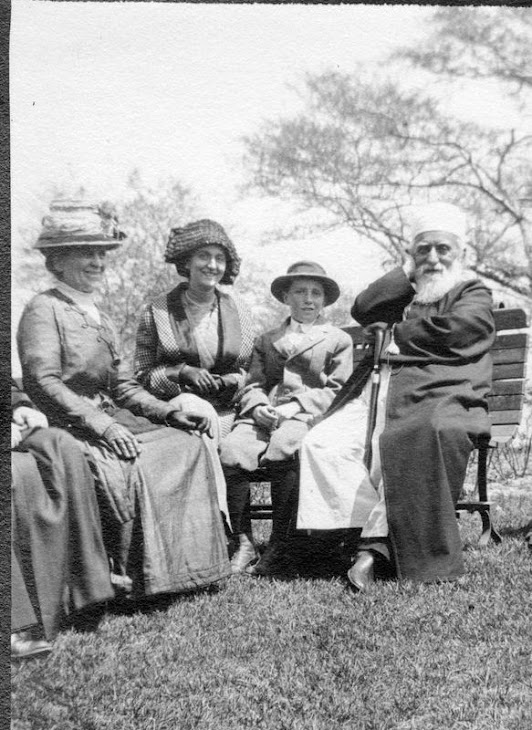Workshop on Storytelling in Service to the Cause of God
NEBY Conference, Stamford CT 2010 www.neby.org
NEBY Conference, Stamford CT 2010 www.neby.org
By Brent Poirier
These are suggestions based on personal experience, which are offered for your consideration.
Pray. Storytelling is teaching, not entertainment. Ask the Concourse to inspire the listeners' hearts.
Pray for selflessness, ask the Concourse to inspire the hearts. Don't be attached to the response.
Exercise some control over the direction of the gathering; don't be afraid to be reverent, to bring up the Word of God
Place your stories in categories and make a list of key words you can quickly scan. Examples:
~ Uplifting Stories; Stories of Martyrdom; Stories of the Fund
~ Stories of the Covenant – faithful and unfaithful people
~ Stories to use in home visits for the deepening themes:
The Covenant of God;
Events in the Ministry of Baha'u'llah;
Stories on Love and Unity;
Nineteen Day Feast;
Studying the Word together;
stories of Baha'i teachers
~ Moving stories
~ Stories involving children
~ Stories involving youth
~ Stories supporting women in leadership roles
~ Stories encouraging the friends to obey the laws
~ Stories that confirm people in their faith
~ Humorous stories;
~ Serious stories, stories of martyrdom
Let the story tell itself; don't explain it; don't tell people to laugh. Be detached from praise. The goal is to turn the hearts to God, not to you.
Follow tragic stories with happy stories or moving or uplifting stories, cheer the hearts after the experience of sorrow
Establish a rhythm between quoting the Word of God and telling stories
Every believer can serve “all can pray, fight their own spiritual battles, and contribute to the Fund”
Look for stories, repeat them accurately, practice with your friends, list them, use them often
“At the gate of the garden, some stand and look within, but do not care to enter. Others step inside, behold its beauty, but do not penetrate far. Still others encircle this garden, inhaling the fragrance of the flowers; and having enjoyed its full beauty, pass out again by the same gate. But there are always some who enter, and becoming intoxicated with the splendor of what they behold, remain for life to tend the garden."
(Abdu'l-Baha to Inez Greeven during her 1921 Pilgrimage)




Dear Brent,
ReplyDeleteWhat a rich resource you have created here!
I attended this workshop at NEBY and enjoyed it so much. You shared a humorous story about Abdul-Baha's visit to the U.S. He meets a young boy who had fallen and as a result he has his head wrapped with a bandage. Seeing Abdul-Baha in his turban, he remarks, "did you fall too?!"
Could you remind me who the young boy was and where exactly the story took place? If you have previously posted this story and can point me in the right direction I would appreciate it.
Thank you for this wonderful service!
Warmest,
Tara
Dear Brent,
ReplyDeleteAllow me to share with you a note i sent some years ago to a Jewish friend, Dan Yashinsky, who is well-known in Canadian story-telling circles.
"Dear Dan,
Let me repeat my praise for your latest book, 'Suddenly they heard footsteps' and my great enjoyment at the storytelling evening you hosted in Yellowknife recently. My wife and i were tempted to experiment with storytelling in our local Baha'i community, and this is how it went...
Baha'i communities hold a communal event every nineteen days called a Nineteen Day Feast and which are named after the month of the Baha'i calendar in which they are held. The Baha'i Feast consists of three distinct, but related parts: a devotional part with prayers and scriptural readings, an administrative part, and a social part. On June 24th we hosted in our home the Feast of Mercy, named after the month of Mercy. During the social part of the Feast, after all the friends had been served coffee, tea, cakes and dips, the community was called back together. Welcoming and encouraging the friends' participation in storytelling, i handed my shillelagh, my talking stick, to an Iranian Baha'i who offered a traditional story of two Persian lovers, Majnun and Layli. From there the shillelagh circled the room and heard many stories over the next hour and a half. What we really heard was the authentic voices of many of our fellow believers as they told stories of mercy, grace and compassion in their lives or passed on stories of their families. Some of the friends, who hitherto remained reserved, were animated in the telling of their family tale. The effect and power of storytelling was evidence, and the bonds of friendship and understanding increased.
And so my friend, thank you for telling your stories and encouraging stories to be told."
stephen
“Perhaps no other people enjoy good stories better, and are more apt at telling them, than are the Indians. This art, most highly prized in a race without books, serves as a necessary outlet to their imaginations, and wonderfully enlivens their social and family life. The time for telling Indian stories is in the evening-best of all, around a glowing wood fire, on the long nights of winter. Here, every accent, every gesture, has its meaning, no faintest shade of which is lost upon the circle of attentive listeners”
ReplyDeleteExcerpt From: Charles Alexander Eastman. “Indian Scout Talks.” iBooks.
This material may be protected by copyright.
Check out this book on the iBooks Store: https://itun.es/us/Ocuy3.l